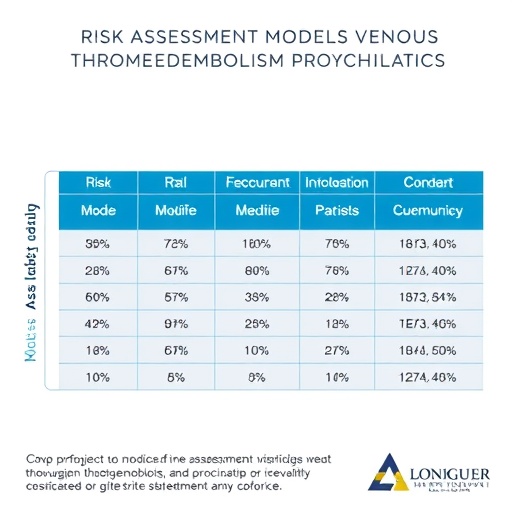
Credit: University of Bath
Thousands of new homes, schools and offices may be using much more energy than they should, and the reason is rather unexpected, according to the authors of a new study published by the University of Bath.
- Many UK non-domestic buildings often use twice as much energy and emit twice as much carbon dioxide as the professionals who designed them predicted.
- This massive underestimation of how much energy a building will use is a problem because the UK's buildings account for nearly 50 per cent of the nation's greenhouse gas emissions.
- The government has an ambitious target of reducing national greenhouse gas emissions by at least 80 percent by 2050, with an immediate reduction target of 34 percent by 2020.
- The researchers believe this will not be achieved unless the UK construction industry acts swiftly to address 'not fit for purpose' building modelling professionals.
The study found a new reason for the 'performance gap' – the difference between how much energy a building is predicted to use and how much it uses in reality. Architects or engineers have known about this 'gap' for a long time, even if most homeowners or facilities managers have not. Building modelling professionals have blamed everyone from the builder not installing insulation correctly to the occupants leaving the lights on, but have never asked if they might be part of the problem.
Lead investigator and Professor of Low Carbon Design at the University of Bath, David Coley, said: "The 'performance gap' is a problem that affects all new buildings as well as the refurbishment of older ones.
"Previous research has assumed the 'performance gap' can be attributed to the construction and operation stages. However, we have revealed a new cause for the 'performance gap', that being the modelling illiteracy of building modelling professionals arising from the modellers being separated from the rest of the construction process and the final building.
"The impact of the inaccuracies of building modelling professionals has severe financial and environmental implications for both the government's global warming targets as well as building owners who are purchasing homes and other buildings that are sold to be energy efficient but in reality are not."
The 'performance gap' is somewhat similar to the Volkswagen emission scandal in which large numbers of VW cars were found to have a gap between the performance promised by the car manufacturer and how their cars performed in reality, with some VW cars being found to emit up to 40 times more pollution than allowed.
In the first research of its kind, a team from the University of Bath's Department of Architecture & Civil Engineering and Department of Psychology interviewed 108 building modelling professionals about 21 common design energy-related aspects of a building, from the insulation in the walls to the temperature the heating was set to.
The questioning was based on a real building in which detailed energy, occupancy and temperature data had been recorded, and provided a comparison with the answers of those surveyed.
The researchers found that the building modelling professionals could not agree on which aspects were important and which were not, or how much difference to the energy bill changes to them would make. A quarter of those interviewed were judged to be no better than if a member of the public had responded at random.
The study also found individuals' level of qualification or years of experience in energy modelling, did not improve the accuracy of the respondents' answers. Using language and methods drawn from the educational sector, the researchers have described participants as being 'modelling illiterate'.
Building modelling professionals are responsible for forecasting a proposed building's energy efficiency and making recommendations about which design aspects, such as the amount of glass, how much natural ventilation is provided, or which materials need altering to achieve the highest possible building performance in terms of energy efficiency.
They use a number of computer simulation programmes whereby they input data about the proposed building to calculate the building's energy efficiency, indicated by the building's Energy Performance Certificate. This certificate uses an A-G scale similar to the one found on a new washing machine and other white goods. However, unlike car and washing machine manufacturers, building modellers are not legally obliged to ensure a building's certificate matches its performance in real life.
Although those doing the modelling do need to demonstrate a minimum level of competence, the focus is on the calculations and the legislative framework, not on checking if the predictions match the performance of buildings once constructed. In addition, those doing the modelling rarely discover if their calculations have any relation to the performance of the building once in use. This is in stark contrast for example with the outcomes data surgeons have access to, and rely on to judge their work.
Hence maybe it is not surprising that there can be a 200 per cent difference between a building's predicted performance and the real one. This gulf in energy efficiency can have serious financial implications for home and building owners alike, as energy is often the greatest cost of a building after paying the mortgage. But energy is not the only question, the same computer programs and modellers predict the temperature of rooms in summer and many other things which might explain the experience of many forced to sweat in 'glass box' buildings.
Co-investigator and Senior Lecturer in the Department of Psychology, Dr Ian Walker added: "Given our findings about how the level of relevant education and experience don't separate the good modellers from the bad, we are calling on the government for educational and policy change to work with industry and universities to increase efforts in improving building physics education.
"Currently, an in-depth qualification for building modelling does not exist, meaning there is little formal training process for those entering the profession. If this aspect can be addressed, part of the 'performance gap' could rapidly be reduced."
###
The study 'The building performance gap: Are modellers literate?' is published in the Building Services Engineering Research and Technology journal and can be accessed at: http://journals.sagepub.com/doi/pdf/10.1177/0143624416684641
This study was supported by the Engineering and Physical Sciences Research Council (EPSRC) funded ENLITEN and COLBE projects.
Media Contact
Robert Breckon
[email protected]
44-122-538-5798
@uniofbath
http://www.bath.ac.uk
############
Story Source: Materials provided by Scienmag





